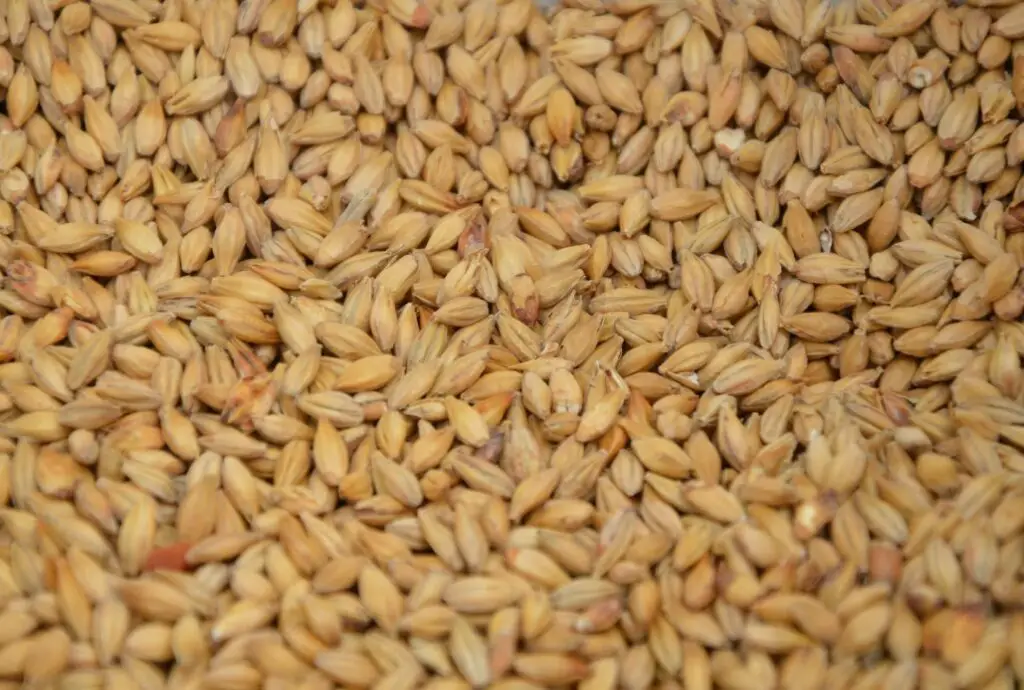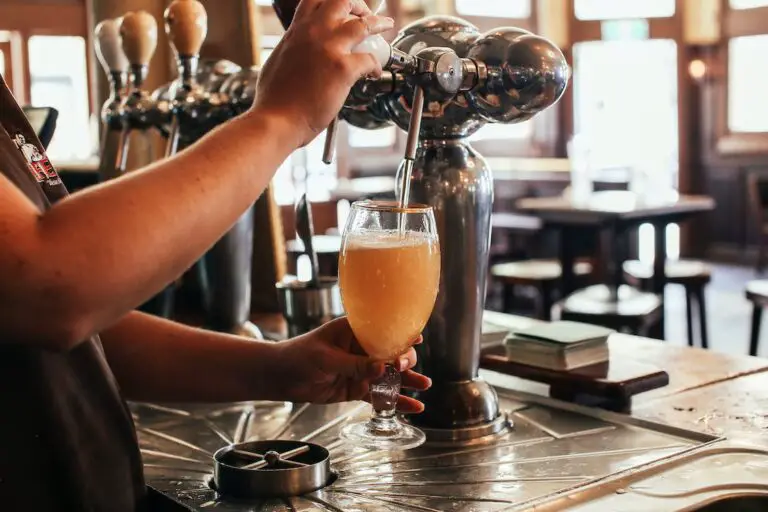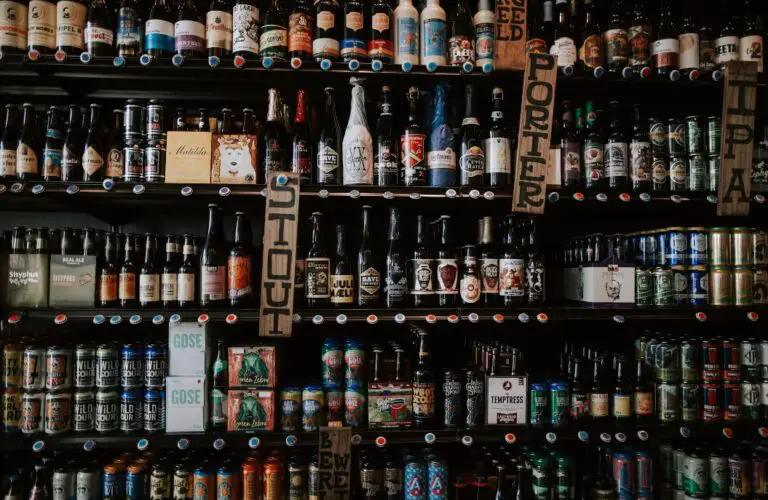Can Beer Become Poisonous?
Some think beer can become poisonous if it goes bad. Yes, it can go bad, but can beer become poisonous?
No, beer is not inherently poisonous. The brewing process involves the fermentation of ingredients like water, barley, hops, and yeast. When conducted under proper hygiene and quality control measures, beer is generally safe for consumption.
However, the risk of contamination or spoilage exists if there are lapses in brewing, storage, or handling practices. Common contaminants include heavy metals, microbial agents, or unintended additives.
Regulatory bodies and industry standards play a crucial role in ensuring the safety of beer by setting guidelines and conducting inspections. In summary, while beer is not poisonous by nature, maintaining quality standards is essential to ensure its safety for consumers.

Beer – Safety Considerations
Safety considerations in beer revolve around key elements of the brewing process, with a focus on yeast, fermentation, and potential issues:
1. Yeast and Fermentation: Yeast plays a central role in the brewing process, converting sugars into alcohol and carbon dioxide during fermentation. While yeast is generally safe, contamination or the introduction of unwanted strains can occur. Maintaining the right yeast variety and ensuring proper fermentation conditions are crucial for beer safety.
2. Potential Issues: Several potential issues can arise during the brewing process, leading to safety concerns. These include microbial contamination, inadequate sanitation, or the presence of undesirable by-products. Brewers must adhere to stringent quality control measures to mitigate these risks and produce a safe end product.
3. Safety Regulations: To safeguard consumers, various safety regulations govern the production and sale of beer. Regulatory bodies, such as the FDA and local Alcohol Beverage Control agencies, set standards for ingredients, labeling, and production processes. Brewers must comply with these regulations to ensure that their products meet established safety criteria.
4. Quality Control Measures: Breweries implement comprehensive quality control measures to detect and address potential safety issues. Regular testing for contaminants, monitoring fermentation parameters, and ensuring proper sanitation are integral to producing a safe and high-quality beer.
In summary, safety considerations in beer production encompass vigilant control over yeast, fermentation processes, and the implementation of stringent quality control measures. Adherence to safety regulations further ensures that the final product meets established standards, assuring consumers of the safety of the beer they enjoy.

Additives and Preservatives
Common Additives:
- Flavorings: Beer flavorings are additives used to enhance or modify the taste profile of the brew. While many traditional beers rely solely on natural ingredients like hops, modern brewing techniques sometimes incorporate additional flavorings. These can range from fruits and spices to herbs and even unconventional ingredients. Brewers need to carefully balance these additives to ensure they contribute positively to the beer’s taste without compromising safety or authenticity.
- Colorings: The color of beer is an essential aspect of its appearance and can influence the consumer’s perception of taste. Some brewers may use colorings to achieve specific visual characteristics in their beer. Caramel is a common natural coloring agent used to adjust the color without introducing additional flavors. However, excessive use of artificial colorings may raise concerns about the authenticity and safety of the beer, emphasizing the need for transparency in labeling and adherence to safety regulations.
Preservatives:
- Purpose and Types: Preservatives in beer serve the crucial role of extending shelf life by inhibiting the growth of unwanted microorganisms and preventing spoilage. While traditional brewing practices often rely on natural preservatives like hops, some commercial beers may include synthetic preservatives. Common preservatives include sulfur dioxide and certain antimicrobial agents. The choice of preservative depends on the brewer’s objectives and the desired shelf life of the beer. However, excessive use of preservatives can raise health concerns and impact the beer’s overall quality.
- Safety Regulations: Safety regulations regarding the use of additives and preservatives in beer vary across regions and countries. Regulatory bodies, such as the FDA, set limits on the types and amounts of additives permissible in alcoholic beverages. Brewers must comply with these regulations to ensure consumer safety and transparency. Additionally, breweries often engage in self-regulation, adhering to industry standards and best practices to maintain the integrity of their products. Clear and accurate labeling is crucial, allowing consumers to make informed choices about the beers they purchase and consume.
In summary, the use of additives and preservatives in beer is a nuanced aspect of brewing that requires careful consideration. Balancing innovation with adherence to safety regulations ensures that these elements contribute positively to the beer’s characteristics without compromising consumer well-being.

Brewing and Production Processes
Quality Control Measures:
- Testing for Contaminants: Rigorous quality control starts with testing raw ingredients and continues throughout the brewing process. Regular analysis for contaminants, such as heavy metals, pesticides, and microbial agents, ensures that the beer meets safety standards. Testing may include both in-house procedures and third-party laboratory assessments to maintain objectivity and accuracy.
- Sanitation Protocols: Maintaining a clean and sanitized brewing environment is paramount to prevent contamination and ensure the safety of the final product. Brewers follow strict sanitation protocols for equipment, tanks, and facilities. This includes thorough cleaning procedures, sterilization of equipment, and the use of sanitizing agents to eliminate any potential sources of contamination.
Brewing Standards:
- Compliance with Regulations: Brewers adhere to a plethora of regulations set by government bodies, such as the FDA and local Alcohol Beverage Control agencies. These regulations cover various aspects, including ingredient quality, production processes, labeling, and alcohol content. Compliance with these standards is mandatory to ensure the safety and legality of the beer.
- Industry Best Practices: Beyond regulatory compliance, brewers often adopt industry best practices to enhance the quality and safety of their products. This includes following guidelines from brewing associations and engaging in continuous improvement initiatives. Collaboration within the brewing community allows for the exchange of knowledge and experiences, contributing to the overall elevation of brewing standards.
Fermentation Process:
- Temperature Control: Maintaining optimal fermentation temperatures is critical to producing a safe and high-quality beer. Deviations from the recommended temperature range can lead to off-flavors, yeast stress, or the proliferation of unwanted microorganisms. Breweries employ advanced temperature control systems to ensure consistency and quality in the fermentation process.
- Yeast Management: Proper yeast management is essential for the fermentation process. This includes selecting the right yeast strain, maintaining yeast health, and controlling fermentation conditions. Poor yeast management can result in off-flavors, stalled fermentation, or contamination, jeopardizing the safety and quality of the beer.

Health Risks
Contaminants in Beer
- Heavy Metals: Heavy metal contamination in beer poses a potential health risk, with elements such as lead, cadmium, and arsenic being of concern. These metals can enter the brewing process through water, raw ingredients, or equipment. Brewers meticulously monitor and test for heavy metal levels, ensuring that they fall within permissible limits. Stringent quality control measures, including water testing and sourcing from reputable suppliers, play a crucial role in mitigating the risk of heavy metal contamination.
- Microbial Contamination: Microbial contamination is a significant health risk associated with beer. Undesirable microorganisms, such as bacteria and wild yeast strains, can lead to off-flavors, spoilage, and even potential health issues for consumers. Brewers implement rigorous sanitation practices, including the cleaning and sterilization of equipment, to prevent microbial contamination. Additionally, regular testing for microbial presence ensures that the final product meets safety standards.
Allergens and Sensitivities
- Gluten: Gluten, a protein found in barley and wheat, poses a health risk for individuals with gluten sensitivities or celiac disease. Brewers are increasingly aware of this concern and offer gluten-free beer alternatives using ingredients like sorghum, rice, or gluten-free grains. Clear labeling is crucial to help consumers identify gluten-free options, and breweries follow gluten-free certification standards to assure the safety of these products for individuals with gluten-related disorders.
- Other Potential Allergens: Beyond gluten, other potential allergens may be present in beer, such as nuts, fruits, or spices used as flavorings. Brewers must clearly label their products to inform consumers of potential allergens. Additionally, adherence to good manufacturing practices, thorough cleaning of equipment between batches, and segregation of ingredients help prevent cross-contamination and reduce the risk of allergen exposure.

Regulations and Safety Standards
Government Regulations
- FDA and Alcohol Beverage Control: The U.S. Food and Drug Administration (FDA) and various Alcohol Beverage Control (ABC) agencies at the state level play pivotal roles in regulating the safety of alcoholic beverages, including beer. The FDA sets federal standards for labeling, ingredient safety, and overall product integrity. At the state level, ABC agencies oversee compliance with local laws and regulations, ensuring that breweries adhere to specific guidelines related to alcohol production, distribution, and sales.
- International Standards: Beyond national regulations, international standards contribute to the global safety framework for beer. Organizations like the Codex Alimentarius Commission establish guidelines for food safety, including those applicable to alcoholic beverages. International trade in beer necessitates alignment with these standards to ensure consistency and safety for consumers worldwide. Brewers exporting their products must comply with the regulatory requirements of the destination country.
Industry Initiatives
- Brewery Associations: Brewery associations play a crucial role in establishing and promoting industry-wide safety standards. These associations, such as the Brewers Association in the United States or the Campaign for Real Ale (CAMRA) in the United Kingdom, advocate for best practices, quality assurance, and responsible brewing. They often collaborate with regulatory bodies to ensure that government regulations align with the needs and realities of the brewing industry.
- Self-Regulation: Many breweries engage in self-regulation to uphold the highest standards of safety and quality. This involves voluntarily adhering to established industry guidelines, conducting regular internal audits, and implementing additional safety measures beyond mandatory requirements. Self-regulation fosters a culture of responsibility within the brewing community, where breweries actively strive to exceed baseline safety standards.

Wrapping It Up
In summary, government regulations, both at the national and international levels, provide a legal framework for ensuring the safety of beer. Brewery associations and self-regulation initiatives further enhance these efforts by promoting best practices, continuous improvement, and a commitment to producing high-quality, safe products for consumers. This collaboration between regulatory bodies and industry stakeholders forms a robust system that prioritizes the safety and well-being of beer consumers worldwide.

I am a young architect with a passion that goes beyond blueprints… it’s beer! undertherosebrewing.com is more than just a blog, it’s a manifestation of my lifelong dream to explore, read, and learn everything about beer. Join the blog on this unfiltered and genuine adventure into the heart of beer culture. Cheers!






